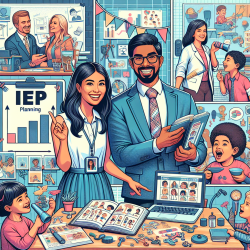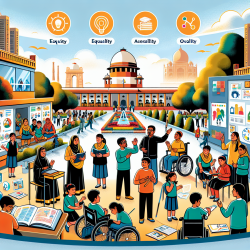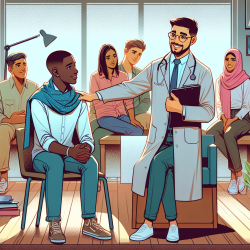As a Special Education Director, you are no stranger to the feeling of burnout. The responsibilities of managing Individualized Education Programs (IEPs), ensuring compliance, and meeting the diverse needs of students can be overwhelming. However, there are ways to reignite your passion and transform the IEP planning and meeting process into an inspiring and efficient experience.
Effective IEP planning and meetings are crucial for the success of your students and the well-being of your staff. Here are some strategies to help you streamline the process and foster a collaborative and positive environment:
1. Set Clear Objectives
Before each IEP meeting, establish clear objectives and goals. This will help keep the meeting focused and ensure that all necessary topics are covered. Consider the following:
- Review the student's progress and current performance levels.
- Identify specific areas of need and set measurable goals.
- Discuss any required accommodations or modifications.
- Plan for the integration of online therapy services, such as speech therapy, if needed.
2. Foster Collaboration
Encourage collaboration among all team members, including teachers, therapists, parents, and the student. A collaborative approach ensures that everyone has a voice and that the student's needs are met holistically. Here are some tips to foster collaboration:
- Schedule regular team meetings to discuss the student's progress and any concerns.
- Utilize online platforms to facilitate communication and document sharing.
- Encourage open and honest communication, and actively listen to each team member's input.
3. Utilize Technology
Technology can be a powerful tool in the IEP planning and meeting process. Online therapy services, such as those provided by TinyEYE, can help bridge the gap in speech therapy staffing and ensure that students receive the support they need. Additionally, consider using the following technologies:
- Online scheduling tools to coordinate meetings and appointments.
- Digital IEP management systems to streamline documentation and reporting.
- Video conferencing platforms to facilitate remote meetings and consultations.
4. Focus on Student-Centered Goals
At the heart of every IEP meeting should be the student. Ensure that the goals and objectives set are student-centered and tailored to their unique needs and strengths. Consider involving the student in the planning process to empower them and give them a sense of ownership over their education. Here are some ways to focus on student-centered goals:
- Conduct regular assessments to monitor the student's progress and adjust goals as needed.
- Incorporate the student's interests and preferences into the IEP goals.
- Provide opportunities for the student to voice their opinions and participate in decision-making.
5. Prioritize Self-Care
As a Special Education Director, it is essential to prioritize your own well-being to avoid burnout. Self-care is not a luxury but a necessity to maintain your passion and effectiveness in your role. Here are some self-care strategies:
- Set boundaries and manage your time effectively to avoid overworking.
- Engage in activities that bring you joy and relaxation outside of work.
- Seek support from colleagues, friends, or a professional counselor if needed.
By implementing these strategies, you can transform the IEP planning and meeting process into a more efficient, collaborative, and inspiring experience. Remember, the ultimate goal is to provide the best possible support for your students, and by taking care of yourself and fostering a positive team environment, you can achieve this goal.
At TinyEYE, we are committed to supporting Special Education Directors and their teams through our online therapy services. Whether you need assistance with speech therapy staffing or want to explore the benefits of online therapy in schools, we are here to help. Together, we can reignite your passion and ensure that every student receives the support they need to thrive.










